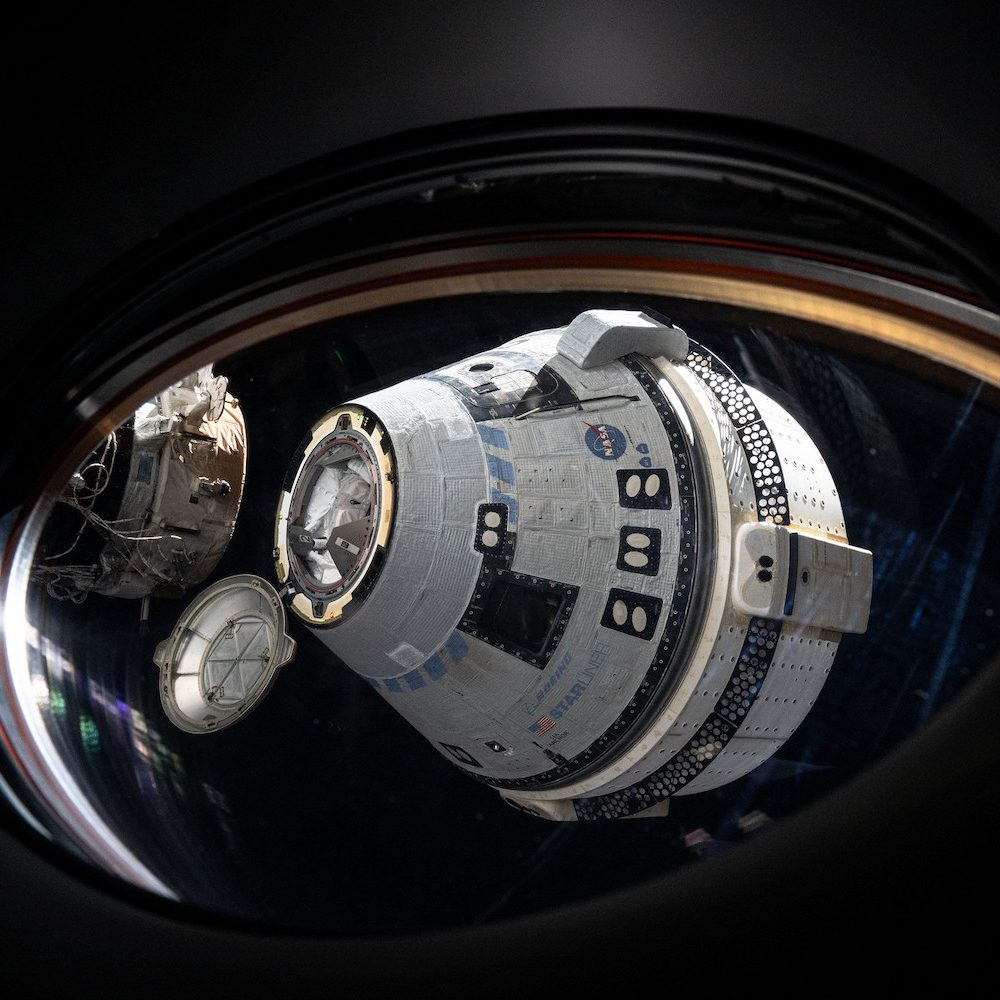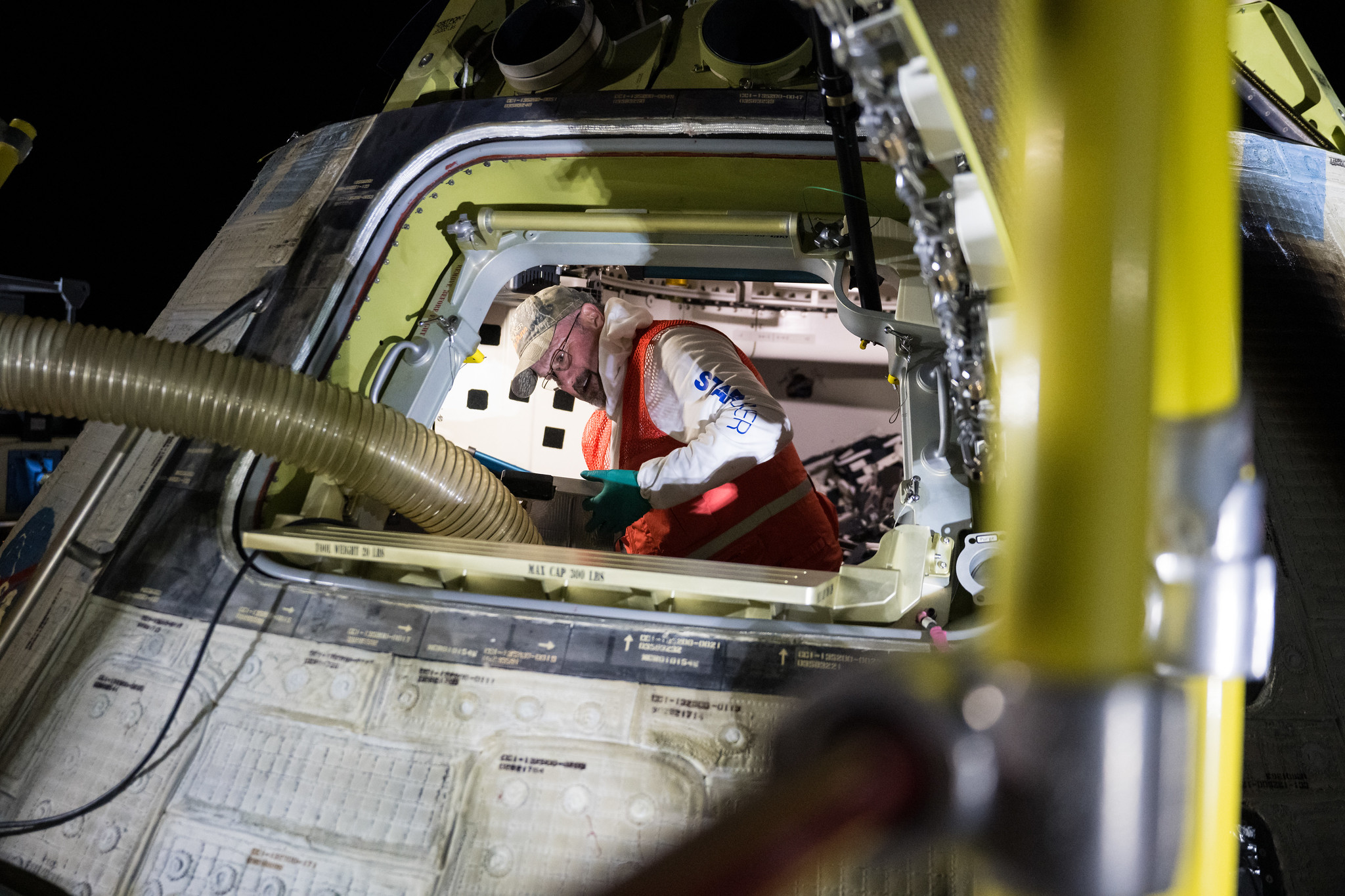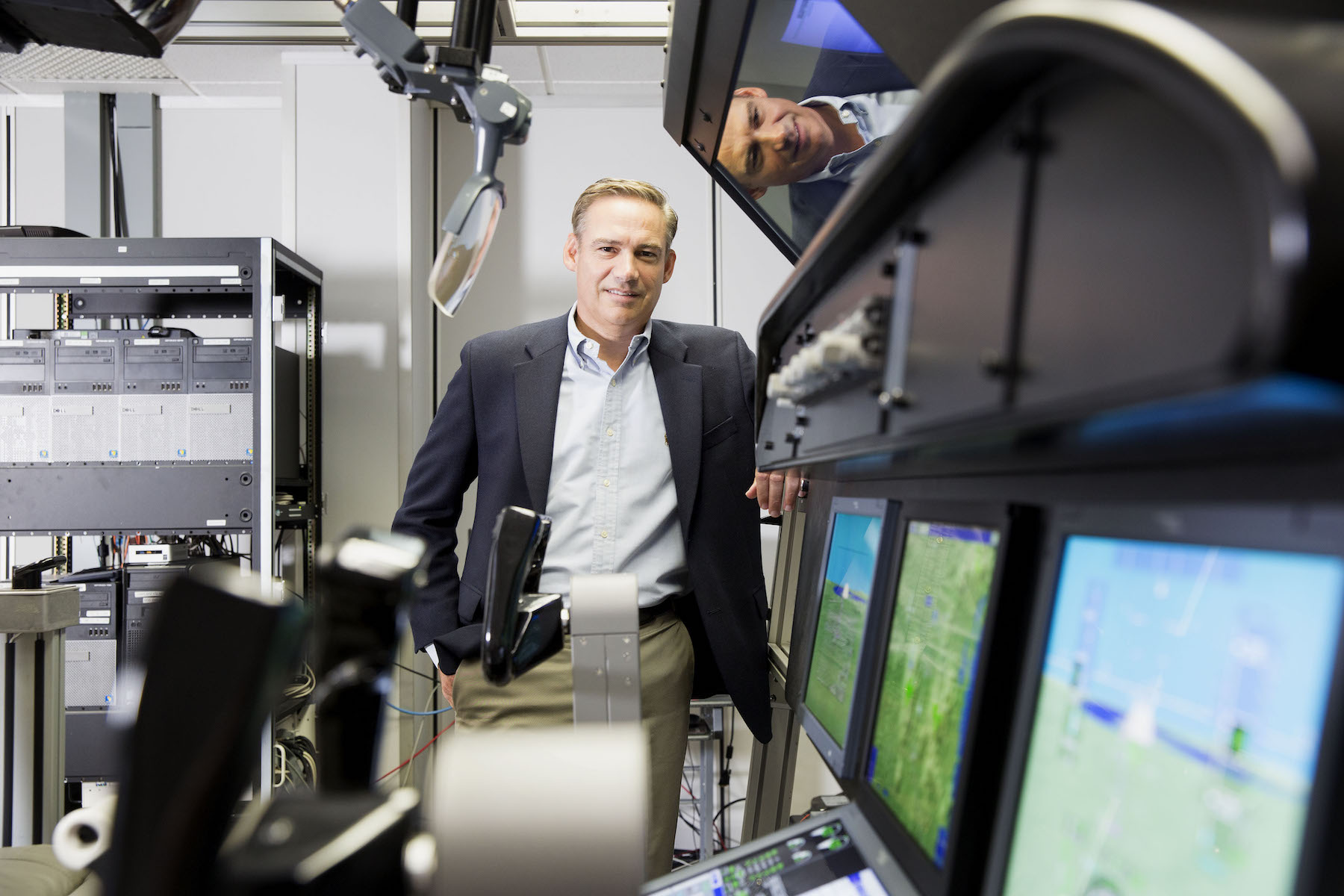“We signed up to some things that are problematic.”

Boeing’s Starliner spacecraft backs away from the International Space Station on September 6 without its crew. Credit: NASA
Sometimes, it’s worth noting when something goes unsaid.
On Wednesday, Boeing’s new CEO, Kelly Ortberg, participated in his first quarterly conference call with investment analysts. Under fire from labor groups and regulators, Boeing logged a nearly $6.2 billion loss for the last three months, while the new boss pledged a turnaround for the troubled aerospace company.
What Ortberg didn’t mention in the call was the Starliner program. Starliner is a relatively small portion of Boeing’s overall business, but it’s a high-profile and unprofitable one.
Mounting losses
Boeing has reported recurring financial losses on the program and added $250 million to the tally with Wednesday’s quarterly report filed with the Securities and Exchange Commission. This brings the company’s total losses on Starliner to $1.85 billion, recorded in increments over the last few years as the program has faced technical problems and delays.
In its SEC filing, Boeing wrote: “Risk remains that we may record additional losses in future periods.”
Boeing runs the Starliner program under a fixed-price contract with NASA, meaning the government pays the contractor a set amount of money, and the company is on the hook for any cost overruns. These are favorable terms for the government because they divert financial risk to the contractor, usually resulting in lower costs if the program is successful.
Since the last Starliner test flight ended in a disappointing fashion, Boeing has released no updates on its plans for the future of the spacecraft. The company released a short written statement after Starliner landed in early September, saying managers would review data and “determine the next steps for the program.”
A week after Starliner landed, Boeing’s chief financial officer, Brian West, echoed that line. “There is important work to determine any next steps for the Starliner program, and we’ll evaluate that,” he said at a conference sponsored by Morgan Stanley.
A member of the Starliner recovery team removes cargo from the spacecraft after landing in New Mexico on September 6, without its two-person crew. Credit: NASA/Aubrey Gemignani
Starliner concluded its third test flight a little more than six weeks ago, leaving behind the two astronauts the craft ferried to the International Space Station earlier in the year. This was the first time people flew into orbit on a Starliner spacecraft.
NASA, which partnered with Boeing to develop the Starliner spacecraft, decided the Boeing capsule should return to Earth without its crew after the test flight encountered problems with overheating thrusters and helium leaks. The spacecraft safely reached the space station with NASA astronauts Butch Wilmore and Suni Williams in June, but agency officials were not comfortable with risking the crew’s safety on Starliner for the trip home. Instead, the duo will return to Earth on a SpaceX Dragon spacecraft early next year.
Boeing managers had a different opinion and lobbied for Starliner to return to Earth with Wilmore and Williams. Ultimately, the Starliner spacecraft parachuted to a successful landing at White Sands Space Harbor, New Mexico, on September 6, but there’s a lot of work ahead for Boeing to fix the thruster problems and helium leaks before the capsule can fly with people again. This will take many months—potentially a year or more—and will cost Boeing hundreds of millions of dollars, as shown in Wednesday’s SEC filing.
Doing less
In response to questions Wednesday from Wall Street investment firms, Ortberg, who took the CEO job in August, suggested it’s time for Boeing to look at cutting some of its losses and recalibrate how it pursues new business opportunities. Boeing’s previous CEO, Dave Calhoun, said last year the company would no longer enter into fixed-price development contracts.
“I think that that we’re better off being doing less and doing it better than doing more and not doing it well,” Ortberg said. “So we’re in the process of taking an evaluation of the portfolio. It’s something a new CEO always does when you come into a business.”
Most of Boeing’s financial loss in the third quarter of this year came from the company’s commercial airplane business. Beset by safety concerns with its 737 Max aircraft and a labor strike that has halted production at many of its airplane factories, Boeing posted its worst quarterly performance since the height of the COVID pandemic in 2020.
Even before the strike, the Federal Aviation Administration capped Boeing’s production rate for the 737 Max, limiting revenue for the commercial airplane business.
Ortberg didn’t specify any programs that Boeing might consider trimming or canceling, but said the company’s “core” business of commercial airplanes and military systems will stay.
“There are probably some things on the fringe there that we can be more efficient with, or that just distract us from our main goal here. So, more to come on that,” Ortberg said. “I don’t have a specific list of things that we’re going to keep and we’re not going to keep. That’s something for us to evaluate, and the process is underway.”
Kelly Ortberg, Boeing’s new CEO, is pictured in 2016 during his tenure as chief executive of Rockwell Collins. Credit: Daniel Acker/Bloomberg via Getty Images
Apart from technical execution, Ortberg identified Boeing’s errors in cost and risk estimation as other reasons for the company’s poor performance on several fixed-price government contracts, including Starliner.
“We’re not going to be able to just wave the wand and clean up these troubled contracts,” he said. “We signed up to some things that are problematic.”
Ortberg said he is reluctant to ditch all of Boeing’s troubled contracts. “Even if we wanted to, I don’t think we can walk away from these contracts,” he said. “These are our core customers that need this capability. We’ve got long-term commitments to them. So walking away isn’t an answer to this.”
However, Orberg added that Boeing could reassess programs as they shift from one contract phase to the next. NASA’s commercial crew contract with Boeing has a maximum value of $4.6 billion, but that assumes the agency gives Boeing the green light to fly six operational Starliner missions.
So far, NASA has only authorized Boeing to begin detailed preparations for three. The latter half of the commercial crew contract remains a question mark, and could be an opportunity for Boeing to reevaluate the Starliner program without breaking its obligations to NASA. This is especially salient because NASA plans to decommission the International Space Station in 2030, and it’s not clear Boeing could fly all six of its Starliner missions before then while still alternating with SpaceX for crew transportation duties.
“We do have to get into a position where we’ve got a portfolio much more balanced with less risky programs and more profitable programs, and we’re going to be working that,” Ortberg said. “But I don’t think a wholesale walkaway is in the cards.”
This statement makes it sound like Boeing isn’t going to pull the plug on Starliner immediately. Still, Boeing hasn’t laid out its specific plans for Starliner, or even confirmed its intention to keep working on the program. This is puzzling.
Saying nothing
Ortberg was not asked about Starliner in Wednesday’s investor call. After the call, Ars asked a Boeing spokesperson if the company still has a long-term commitment to the Starliner program. The spokesperson replied that the company has nothing to share on the topic.
The Starliner test flight this year was supposed to pave the way for NASA to officially certify the Boeing crew capsule to begin flying in a slate of up to six operational crew rotation flights to the space station. Once certified, Boeing will become NASA’s second crew transportation provider alongside SpaceX, which has now launched nine operational crew missions for NASA, plus a handful more all-private astronaut missions.
NASA still wants to certify Boeing’s Starliner spacecraft to provide the agency with a second commercial option for getting astronauts into orbit. A fundamental goal set out for NASA’s commercial crew program more than a decade ago was to develop two dissimilar human-rated transportation systems for access to low-Earth orbit. The idea here is competition will drive down costs, and NASA will have a backup option if one of the commercial crew providers runs into difficulties.
However, NASA has not announced whether it will require Boeing to complete another test flight to achieve the certification milestone with Starliner. NASA is looking at slots to fly an unpiloted Starliner spacecraft on a cargo mission to the space station next year, perhaps to verify modifications to the ship’s propulsion system really fix the problems discovered on the test flight this year.
NASA is making moves while assuming Boeing will stay in the game. Astronauts are still assigned to train for the first operational Starliner mission, although it’s not likely to happen until the end of next year or in 2026. Earlier this month, NASA announced SpaceX will launch a four-person crew to the International Space Station no earlier than July of next year, taking a slot that the agency once hoped Boeing would use.
Bill Nelson, NASA’s administrator, told reporters in late August that he received assurances from Ortberg that Boeing intends to “move forward and fly Starliner in the future.” At the time, Ortberg was just a couple of weeks into his tenure at Boeing.
Two months later, Nelson’s secondhand assertion is still all we have.


